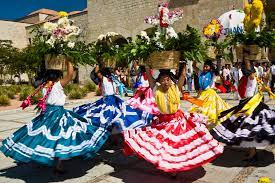September 2022 Monthly Meeting: Carnival of the Animals (for recorder)
- fredericksburgrecorders

- Sep 11, 2022
- 3 min read
Renaissance art is replete with animal imagery and it is no surprise that composers would be inspired art and poetry to create music that hinted a the characteristics of animals through music. Join us as we explore animal-inspired music.
Thomas Bateson (1575-1630) The Nightingale

Performance: https://www.youtube.com/watch?v=hDeQ1KuKhHE
According to Wikipedia (!), Thomas Bateson may have been an organist at the Chester Catherdral in 1599 and he may have been the first graduate of Trinity College in Dublin. We do know that he served as organist at Christ Church Cathedral from 1609 until his death and that he is mostly known for his madgrigals.
Bird imagery is very prominent in Medieval and Rennaissance art, literature and music. The type of bird used could indicate evil, mischief, or the divine, peace or the Resurrection. A good deal of this bird imagery is still finds its way into common parlance today.
Nightingales symbolize beauty and melody. As they are nocturnal birds they also symbolize darkness and mystisism.

Anon. The Cat’s Paw from Glogauer Liederbuch (c. 1480)
Performance: https://www.youtube.com/watch?v=4ebjpNfd2qU
Tracking the changing meaning of a Cat’s Paw through time has been...interesting. The definition of a cat’s paw is: a person who is used by another to carry out an unpleasant or dangerous task. As an object, the cat’s paw was as a talisman similar to the rabbit’s foot in ancient times. In modern times a cat’s paw is a carpentry tool. Some ancient societies held the cat as sacred, (i.e. Ancient Egyptians). In Medieval and Renaissance art, the cat itself symbolized laziness, lust, deception, and betrayal.
What I suspect is being portrayed in this piece is that the author is using shifting rhythms to portray a cat swiping at a mouse or a toy. Whether or not those shifting rhythms are unpleasant or dangerous remains to be seen!
Some short articles on the cat in art: https://www.thegreatcat.org/cats-in-renaissance-art/
Johannes Carmen (late 14th-early 15th centuries) , Der Ratten Schwantz from Glogauer

Liederbuch
Johannes Carmen was a Franco-Flemish composer who appeared to have been active in Paris c. 1440. Martin le Franc in Le Champion des Dames, says that his music “astonished all of Paris” prior to the arrival of music by composers Dunstable and Dufay. Today he is mostly known for sacred music and isorhythmic motets.
The symbolism around the rat ranges a full and dizzying spectrum from the very positive; agile, intelligent, good luck to the extremely negative; death, pestilence and evil.
Article on Rat symbolism: https://www.richardalois.com/symbolism/rat-symbolism

Henry Purcell (1659-1695), Butterfly Dance
Performance: https://www.youtube.com/watch?v=Xf9esDScyT8
Henry Purcell was a prolific English composer. He was as comfortable with sacred music as he was with music for the pub.
In the Renaissance, scholars equated the butterfly with the Greek goddess, Psyche. Psyche was the symbol of the human soul. Butterflies were also seen as symbols of life, immortality, resurrection, and hope. Both sets of symbolism for the butterfly are still used today.
The Butterfly Dance comes from Purcell’s semi-tragic, semi-opera, “The Prophetess; or, the History of Dioclesian”, Z627. The dotted rhythms suggest the fluttering of the butterfly’s wings.
Orlando Gibbons (1583-1625) The Silver Swan

Performance: https://www.youtube.com/watch?v=ZYvZvAihBP0
Orlando Gibbons was an English composer and keyboard player. Gibbons was born into a musical family. By the 1610s he was considered on of the leading organists in the country. He died relatively young but his musical output, in several genres has a lasting impact.
The Silver Swan is Gibbons best known madrigal. The swan imagery in the 16th and 17th century appears to be consistent with our modern imagery. The swan song is that last “thing” before death. The last line of this madrigal has lead some scholars to interpret the madrigal as a “swan song” to the genre of the madrigal. In other words, Gibbons could see, with his first book of madrigals, that the genre he loved so much was beginning to lose popularity.
Thomas Weelkes (c. 1576-1623), The Ape, the Monkey and Baboon

Performance (with recorders!): https://www.youtube.com/watch?v=IAaoWfpeZXg
Thomas Weelkes was an English composer and organist. He became the organist of Winchester College in 1598.
The Ape, the Monkey and Baboon was published in 1608 and in the collection, Ayres or Phantastick Spirits for Three Voices.
Michael Praetorious (c. 1571-1621), La Canarie from the Terpsichore no. 31

Performance: https://www.youtube.com/watch?v=IunbrmYiZcE
Michael Praetorious was a German organist, composer, and music theorist. He wrote several important treatises on the instruments of his day.
The Terpsichore is a compendium of over 300 dances published by Praetorious in 1612. In the introduction Praetorious states that he arranged the tunes but did not compose the tunes. Terpsichore is the muse of the dance.
The canary is one of many traditionally caged birds that makes its’ appearance in Renaissance art.






Comments